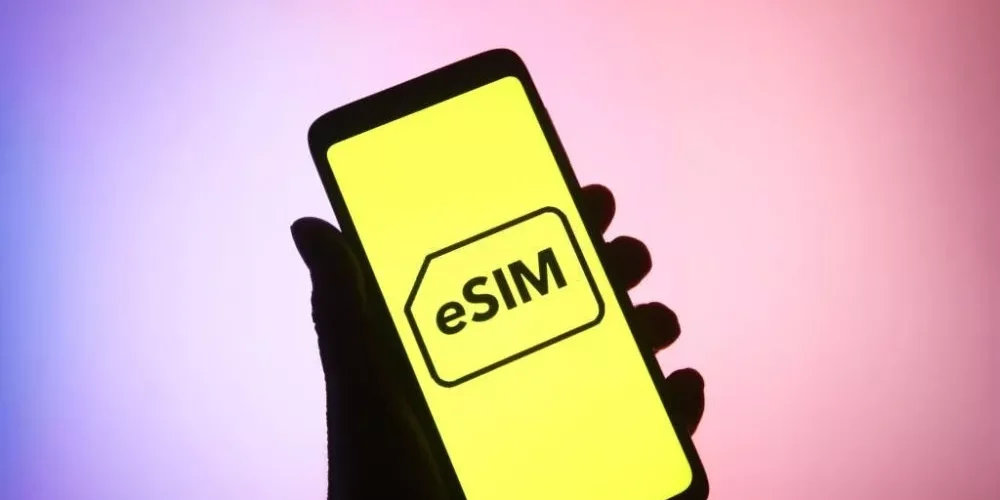Traveling in Europe is an incredible experience, filled with diverse cultures, stunning landscapes, and rich history. However, staying connected while hopping between countries can be expensive and complicated. Traditional SIM cards often come with high roaming fees and the hassle of swapping cards every time you cross a border. Fortunately, eSIM technology offers a convenient and cost-effective solution for travelers. This article explores how you can save money using an eSIM in Europe.
What is eSIM?
An eSIM (embedded SIM) is a digital SIM that allows you to activate a cellular plan without a physical SIM card. It’s embedded directly into your device, making it easier to switch between different carriers and plans. eSIMs are becoming increasingly popular due to their convenience and flexibility, especially for frequent travelers.
Benefits of Using eSIM in Europe
1. No Roaming Fees
One of the biggest advantages of using an eSIM in Europe is the elimination of roaming fees. With traditional SIM cards, you often incur additional charges when using your phone outside your home country. eSIMs allow you to purchase local plans in each country you visit, ensuring you pay local rates rather than exorbitant international fees.
2. Easy Plan Management
Switching between different cellular plans is seamless with an eSIM. You can quickly add or remove plans through your device settings, without needing to swap physical SIM cards. This is particularly useful in Europe, where you might travel through several countries in a short period.
3. Cost-Effective Data Plans
eSIM providers offer competitive rates, often cheaper than traditional roaming plans. By purchasing a local data plan via eSIM, you can access the internet at affordable rates, avoiding the high costs associated with roaming.
4. Convenience and Flexibility
With an eSIM, you no longer need to hunt for local SIM cards upon arrival at each destination. You can purchase and activate plans online before or during your trip, ensuring you stay connected as soon as you land. This convenience saves time and provides peace of mind.
How to Get Started with eSIM in Europe
 1. Check Device Compatibility
1. Check Device Compatibility
First, ensure your smartphone or tablet supports eSIM technology. Most newer models from major manufacturers like Apple, Samsung, and Google are eSIM-compatible. Check your device’s specifications or settings to confirm.
2. Choose an eSIM Provider
Several providers offer eSIM plans for Europe. Popular options include Truphone, GigSky, and Ubigi. Research and compare their plans to find one that suits your travel needs and budget.
3. Purchase and Activate Your eSIM Plan
Once you’ve chosen a provider, purchase an eSIM plan through their website or app. After purchase, you’ll receive a QR code or activation instructions. Follow the instructions to add the eSIM plan to your device. Typically, this involves scanning the QR code in your device’s settings.
4. Manage Your eSIM Plan
Most eSIM providers offer apps or online portals where you can monitor your data usage, top up your plan, or switch to a different plan if needed. This makes it easy to stay within your budget and avoid unexpected charges.
Saving Money with eSIM: Tips and Tricks
1. Choose the Right Plan
Before purchasing an eSIM plan, estimate your data needs. If you plan to use navigation apps, stream videos, or make video calls, opt for a plan with a higher data allowance. For basic browsing and messaging, a smaller plan might suffice. Choosing the right plan ensures you don’t overspend or run out of data midway through your trip.
2. Use Wi-Fi Whenever Possible
Save your eSIM data by connecting to Wi-Fi networks whenever available. Many cafes, hotels, and public spaces in Europe offer free Wi-Fi. Using Wi-Fi for data-heavy activities like streaming and downloading can significantly reduce your eSIM data consumption.
3. Monitor Data Usage
Regularly check your data usage to avoid exceeding your plan’s limit. Most smartphones have built-in data usage monitors, and eSIM provider apps often include this feature as well. By keeping an eye on your usage, you can adjust your habits or top up your plan if necessary.
4. Disable Background Data
Many apps use data in the background, even when you’re not actively using them. Disable background data for non-essential apps to conserve your eSIM data. On both iOS and Android devices, you can manage background data usage in the settings.
Additional Ways to Maximize Your Savings
1. Consider Regional Plans
Some eSIM providers offer regional plans that cover multiple countries in Europe. These plans can be more cost-effective than purchasing separate plans for each country. Research regional options to see if they fit your travel itinerary.
2. Take Advantage of Promotions
eSIM providers often run promotions and discounts, especially during peak travel seasons. Sign up for newsletters or follow providers on social media to stay informed about any deals that could save you money.
3. Opt for Pay-As-You-Go Plans
If you’re unsure about your data needs, consider a pay-as-you-go plan. These plans allow you to top up your data as needed, avoiding the risk of overpaying for unused data or running out of data unexpectedly.
4. Use Offline Maps and Apps
Download maps and other essential apps for offline use before you leave. This way, you can navigate and access important information without using data. Apps like Google Maps and Maps.me offer offline functionality, which can be a lifesaver when traveling.
Real-Life Savings: Case Studies
To illustrate the savings potential, let’s look at a few examples:
Case Study 1: Two-Week Trip Across Europe
Sarah, a digital nomad, travels across Europe for two weeks, visiting France, Germany, and Italy. She needs a reliable internet connection for work and personal use. By purchasing a regional eSIM plan offering 10GB of data for $30, she avoids the typical $10/day roaming fee charged by her home carrier. Over 14 days, she saves $110.
Case Study 2: Business Trip to Multiple Countries
John, a business executive, has meetings in several European countries over ten days. Using a traditional SIM card, he would face high roaming charges, especially for data-intensive tasks like video conferencing. Instead, he opts for an eSIM plan tailored for business travelers, costing $50 for 20GB. Compared to his carrier’s roaming rates, John saves around $150.
Case Study 3: Extended European Vacation
Emily and Mark, a couple from the US, plan a one-month vacation in Europe, visiting multiple countries. They purchase a 30-day eSIM plan with 15GB of data for $40 each. Their home carrier charges $15/day for international roaming. Over 30 days, they save a total of $660.
Frequently Asked Questions about eSIM in Europe
1. Can I keep my original phone number?
Yes, you can keep your original phone number while using an eSIM. Your eSIM plan will provide you with a separate number for data, while your primary number remains active for calls and texts. Some devices even support dual SIM functionality, allowing you to use both numbers simultaneously.
2. How do I switch back to my home carrier?
Switching back to your home carrier is simple. In your device’s settings, you can disable the eSIM plan and re-enable your primary SIM card. The process is quick and doesn’t require removing any physical components.
3. Is eSIM secure?
Yes, eSIM technology is secure. It uses advanced encryption methods to protect your data and ensure your connection is safe. Additionally, because there’s no physical card, there’s less risk of losing or damaging your SIM.
4. What happens if I run out of data?
If you run out of data, you can easily top up your eSIM plan through your provider’s app or website. Most providers offer flexible top-up options, allowing you to purchase additional data as needed.
Conclusion
Using an eSIM in Europe is a smart way to save money while staying connected. With no roaming fees, competitive data plans, and the convenience of managing everything digitally, eSIMs offer travelers flexibility and cost savings. Whether you’re on a short vacation or a longer journey, consider making the switch to eSIM to enhance your travel experience and keep your expenses in check.
By following the tips and steps outlined in this guide, you can maximize the benefits of eSIM technology and enjoy seamless connectivity across Europe. Safe travels!
For more valuable information visit our website.





Add comment